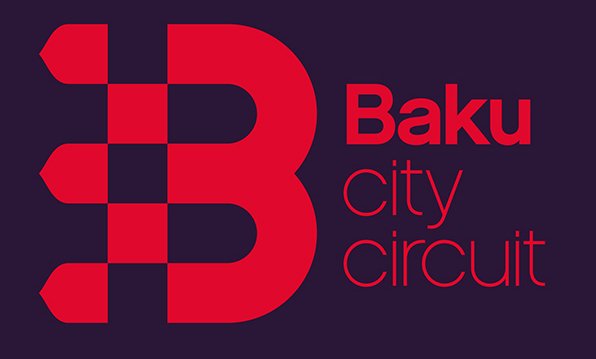-
Address:Baku, Sabail, AZ1003
Equally sized stone boards with writings and different drawings on it attract the attention of each person who comes to Shirvansahs Palace of Baku city.
The mystery of this construction called "Bayil castle" attracted the attention of each scientist and the traveler, investigator and professional historian, writer and poet who came to Baku, it caused people to write different legends and myths about it for centuries.
İ.Berezin, S.Qmelin, B.Dorn, V.Bertold and some other Russian scientists and orientalists who have been here in XIX century wrote about this construction. Even famous French writer A.Dyuma (the father) had been interested in this construction when he was in Baku.
Sometimes investigators call this construction "Bayil castle", sometimes "Sebayil", sometimes "Underground city", sometimes "Caravanserai", "Coal-house", "Weir", "Defence fortification", "Nousheh (New city)", "Castle" etc. There were different thoughts and suggestions expressed about the purpose of this construction and the disaster of the castle. The notable historian of Azerbaijan A.Bakıxanov would write at the beginning of the XIX century: «... It is impossible to deny that Bilgah, Zire, Bibiheibat etc villages of Baku area there are stone wagon roads going towards the sea. When Haji Aga Huseyn’s son Haji Baba dug a well in the place of his grandfather’s room in Baku city, he found a road covered by stones below the sea level.
Later he informs that on the place of Baku a city existed 400-500 years ago that had drowned to the sea; there were towers, walls and 72 grave stones and also written sources that gave information about their history.
Historian Arif Ardabilli who lived in XIV century wrote: "There was a castle called Nousheh (new city) in Baku that stood against the sea, but it was covered by the water".
Great Russian geologist, academician I.M.Qubkin connected one of the reasons of this construction being covered by water with strong and devastating earthquake that happened in the South part of the Caspian Sea in 1306.
German traveler S.Kempfer who had been in Baku in 1683, drew a picture where he showed the city walls stretching into the sea with tops of several half-destroyed towers that were left under the water. He also mentioned that in the result of the sea water level falling down, this construction came up to the surface and he had seen the remainders of this construction.
According to the opinions of the scientists, the level of the Caspian Sea was low till the end of XIII century, but since the end of the XIII century, during approximately 100 years, the Sea level rises up to 10 meters and the level of the sea water was high till the beginning of XX century. In the beginning of XX century the water level went down; in 1920 it went down to 2 metres and since 1960 till today mad waves of the Caspian Sea destroy seaside city and settlements. The monument was left under the water again.
Academician S.Lente who had been in Baku in 1830 wrote concerning the local population: “... Many years ago the sea was at approximately 20 versts distance from the shore. Great Zire, Dash Zire and Pir-Allahı and Cilov islands were not islands. The water of the sea raised suddenly and the shore gets its today"s appearance...”
In the result of investigations in 30th years of XX century historians and archaeologists determined that really, during the Shirvanshah III Fehriburz time a fortification kind of construction was constructed in the Port of Baku. Later the size of the construction was determined; the castle that was built on a high hill has walls which are not straight and in the longish right-angled form. This form, probably, have been adapted according to the relief of the rock it stood on walls. The length of the castle is 175 meters and the width is 35 meters. (But there are sources in the scientific literature showing 180 m length and 40 meters width of the castle). The distances between constructions are about 38 -16 meters; they were connected by semi circus towers and wall. The thickness of the wall is 1,5 – 1,2 meters. There are 15 towers in the monument. Only a corner tower on the north-west and the tower on south had round form; they are empty inside. All the remaining 12 towers are whole from inside and have semicircle form.
It was possible to enter the castle from two sides: from the south and north-west. On the same sides there were 1.3 meter width narrow doors for entering to the castle from three round towers. There were doors in the south walls connecting the 8th and the 9th towers; and a door on the north-west wall connecting 14th and 15th towers. Narrow built doors show that only pedestrian could enter to the castle.
There were stone stairs for climbing to the top of some of the towers.
The foundation parts of a few buildings were found inside of the construction on the south. In the floors of the rooms there were small channels found for water to flow out from the castle.
The castle had been built of limestone. The investigations and studies determined that in the past the whole upper part of the castle wall was surrounded by writings made of stone layers in the form of frieze belt. These are the layer’s measures: the height 70 sm., the width 25-50 sm. and thickness12-15 sm.
The head of a special sea expedition that was implementing investigation works in the Caspian Sea A.İvashintsev took several of these stones with writings on it out of the water for the first time in 1861. He took the photos of the drawings on stones and sent to the archaeological society of St. Petersburg. Later on some more stone layers with such drawing and writings were found.
During the 1939-1969 years till 700 of such stones were found and taken out of the water. At present, these stones are demonstrated in the yard of Shirvansahs palace. Information is written in Persian and Arabic languages. But the most part of it is in Persian and there are different ornaments mostly with “nabati” elements. Besides the writings, some stones have mythic lively animal, and even men pictures on the layers. All these drawings have been skillfully worked. It testifies about the great artistic-aesthetic style of the masters and the mental maturity of the masonry art. Portraits of two young women have been worked especially very skillfully. When looking closely to portraits it could be seen that these images are not the images of woman in general, but they are copies of the real persons...
The conditions of the boards taken out from the water are not the same. Water and time have negatively influenced on them. Some parts of the stones have suffered damage from the influence of waves for centuries; the writings and images have been destroyed.
The construction was investigated for the first time in 1939; copper money with the Shirvanshah III Feriburz’s name was found in one of the half towers. Later on, year 632 of Hegira history, also Shirvan shah names like Yezid, Muhammad, Gersheb were read. Information read on the stones tells the history of Shirvan and Shirvanshah in IX-XIV century, great persons of that time such as Zeyneddin bin Ebu-Reshid, Abu-Rashid bin Zeynaddin, who participated on the monument construction. The information also specifies the date of the monument construction. It has been determined that the castle was built on the Bail hill by Shirvanshah Gushtasb Gershesb’s son Feriburz III (1225-1243) time in 1232-1233.
Among the writings a fragment of writing was restored with the architect of the castle name Abdul-Mecid the son of Masud. This architect built also the Mardakan round castle in the same period of time.
"Great Sea Building", "Shirvan", "Gilan", "Ferrukhzad bin Menuchohr", "Khosrov Shah", "Mahmud from Bak", "Camaat", "Seyid el-Meruf" and another words have been read from another stones. Beside these, "Zeyn-Ed-Din bin Ebu-Reshid El-Neqqash" and "Ustad Zeyn-Ed-Din bin Ebu-Reshid Shirvani’s work" have been read too.
The Bail stones are valuable source for learning the past, the culture and the art of the Azerbaijan people.
The research work on the Bail stones still continues.



.png?v=DqKtbngFu8-eBM77oNP77E2SV2gNF4_tUk0Y9IcK12s)

















